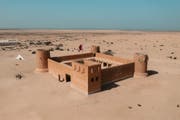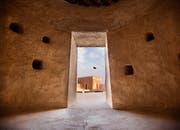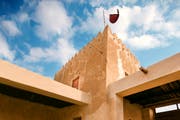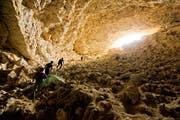Adjacent to the walled coastal town of Al Zubarah, this 20th century fort is the youngest and most prominent feature of the Al Zubarah Archaeological Site, a UNESCO World Heritage site. A pristine example of a typical Arab fort, its one-meter-thick walls warded off invaders and helped keep rooms cool during the hot summer. This important site houses residential palaces, mosques, courtyard houses, fishermen’s huts, streets, double defensive walls, a harbour, a canal, and cemeteries.
Things to do













